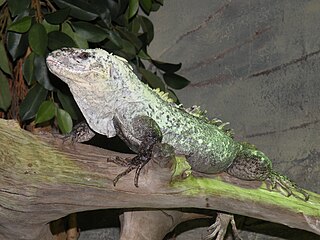
Asphodelus ramosus, the branched asphodel, is a perennial herbaceous plant in the order Asparagales. Similar in appearance to Asphodelus albus and particularly Asphodelus cerasiferus and Asphodelus aestivus, it may be distinguished by its highly branched stem and smaller fruits. There has been a lot of confusion over the nomenclature and taxonomy of the species, owing to its similarity to Asphodelus aestivus.

Asphodelus is a genus of mainly perennial flowering plants in the asphodel family Asphodelaceae that was first described by Carl Linnaeus in 1753. The genus was formerly included in the lily family (Liliaceae). The genus is native to temperate Europe, the Mediterranean, Africa, the Middle East, and the Indian Subcontinent, and some species have been introduced to, and are now naturalized in, other places such as New Zealand, Australia, Mexico and southwestern United States. Many asphodels are popular garden plants, which grow in well-drained soils with abundant natural light.

Asphodeloideae is a subfamily of the monocot family Asphodelaceae in the order Asparagales. It has previously been treated as a separate family, Asphodelaceae sensu stricto. The family Asphodelaceae has now been proposed to be a nomen conservandum, and the proposal has been recommended for ratification in 2017. In that case, Asphodelaceae will have priority over Xanthorrhoeaceae. This is reflected in the APG IV family lists.

Asphodelus fistulosus is a species of plant known as hollow-stemmed asphodel, onionweed, onion-leafed asphodel, and pink asphodel. It is native to the Mediterranean region. It is an invasive exotic weed in the United States, with significant infestations in California, Arizona, New Mexico, and Texas. It is listed as a Federal Noxious Weed by the United States Department of Agriculture. It is also a common weed in parts of Australia, New Zealand, and Mexico, and it thrives in any area with a Mediterranean climate.

Hesperocyparis bakeri, previously known Cupressus bakeri, with the common names Baker cypress, Modoc cypress, or Siskiyou cypress, is a rare species of western cypress tree endemic to a small area across far northern California and extreme southwestern Oregon, in the western United States.

Asphodelus albus, common name white asphodel, is a herbaceous perennial plant belonging to the genus Asphodelus.
The fire-maned bowerbird is a medium-sized, approximately 27 cm (11 in) long, bowerbird that inhabits and endemic to the forests of the Adelbert Range in Papua New Guinea. The striking male is black with fiery orange crown and upperback, elongated neck plumes, yellow iris and golden yellow wing patch. The female is a brown bird with brown-barred whitish underparts.

Ctenosaura bakeri, also known as the Utila spiny-tailed iguana, Baker's spinytail iguana, swamper or wishiwilly del suampo, is a critically endangered species of spinytail iguana endemic to the island of Utila, one of the Islas de la Bahía off the coast of Honduras in the Caribbean.

Arctostaphylos bakeri is a species of manzanita known by the common name Baker's manzanita. It is endemic to Sonoma County, California, where it grows in the chaparral and woodlands of the North Coast Ranges. It is sometimes a member of the serpentine soils flora.

Asphodelus tenuifolius is a species of plant in the asphodel family Asphodelaceae. It is native to North Africa, Southern Europe, the Middle East and South Asia. It has been introduced to Australia and the Mascarene Islands. It is generally present from the Canary Islands, across the Mediterranean to the Middle East and Afghanistan. It has a fibrous root system. It is also known as wild onion or "jungli piyaz" in Pakistan.

Baker's small-toothed harvest mouse is a species of rodent in the family Cricetidae. It is one of about 20 species of the genus Reithrodontomys. This species was discovered in 2004 and is found in Central Mexico.

Angophora bakeri, commonly known as the narrow-leaved apple, is a species of tree that is endemic to New South Wales. It has rough, fibrous bark on the trunk and branches, lance-shaped adult leaves, flower buds in groups of three or seven, white or creamy white flowers and oval to cylindrical fruit.

Mylothris asphodelus is a butterfly in the family Pieridae. It is found in eastern Nigeria, Cameroon, Gabon, the Republic of the Congo, the Democratic Republic of the Congo, Uganda, north-western Tanzania and possibly Angola. The habitat consists of lowland forests. Mylothris asphodelus, like other Mylothris species, occupies the upper portions of forests where the host plants for their larvae are found.
Bakeri Expressway is a north–south highway in the west of Tehran, Iran. It begins from the Hesarak in the north and passes other major highways like Niyayesh, Hemmat and Hakim ending in Tehran–Karaj Expressway. Bakeri is one of the main Expressways of Tehran.

Asphodelus aestivus, the summer asphodel, is a species of asphodel, a common Western Mediterranean geophyte with a short vertical rhizome and basal leaves. Its flowers are actinomorphic, pinkish-white, with six perianth segments, 14–19 mm long and six stamens of the same length, in two whorls. Its distribution is limited to the Western Mediterranean, mainly found in Portugal and Spain on the European mainland. There has been a lot of confusion over the nomenclature and taxonomy of the species, owing to its similarity to Asphodelus ramosus. It grows in dry grasslands, phrygana and on rocky or sandy ground.

Sturnira bakeri is a species of bat found in South-America.
Asphodelus bento-rainhae is a species of asphodel, endemic to the Iberian Peninsula.

Asphodelus acaulis is a species of asphodel found in North Africa.














